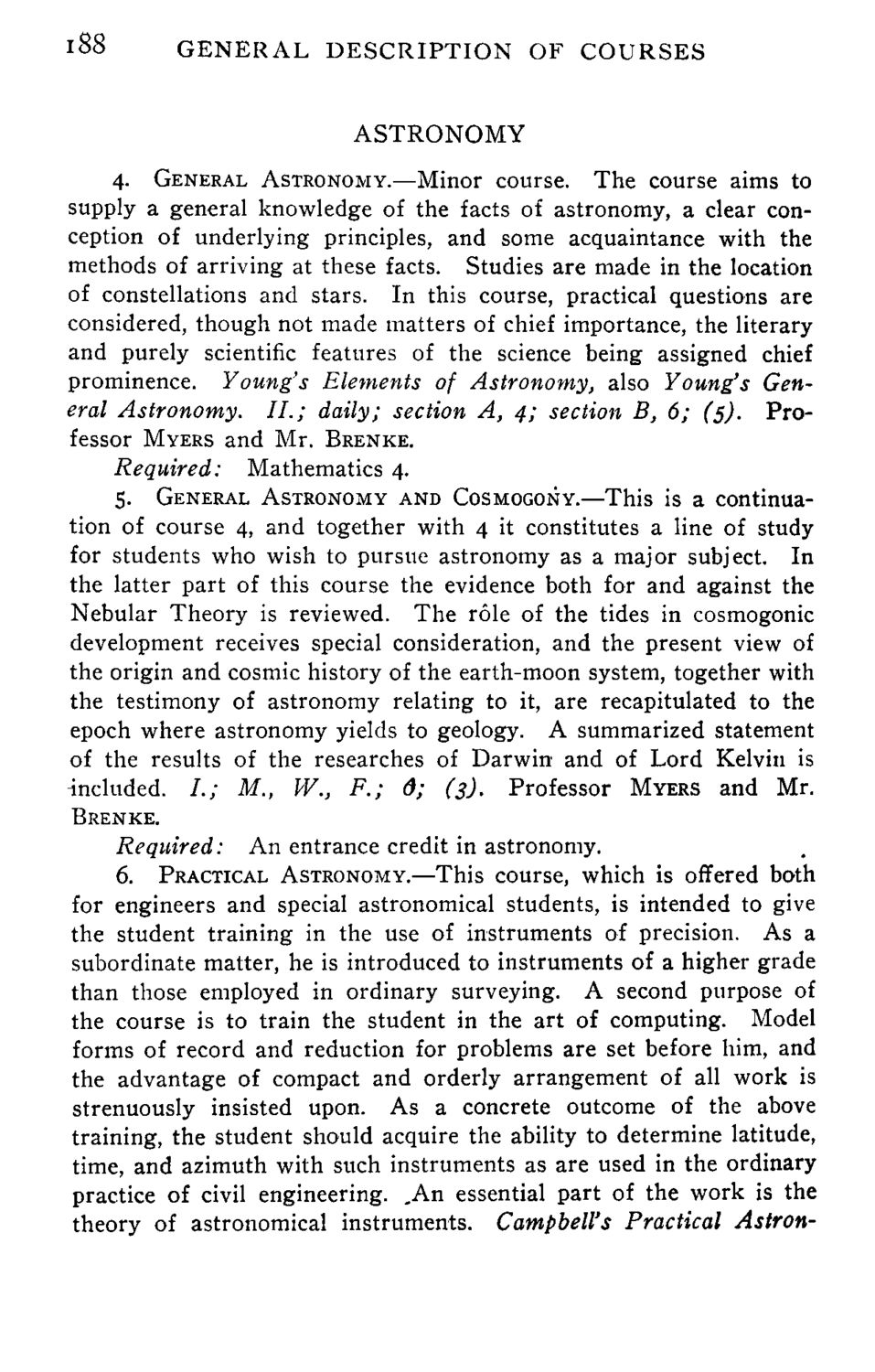Caption: Course Catalog - 1899-1900
This is a reduced-resolution page image for fast online browsing.

EXTRACTED TEXT FROM PAGE:
188 GENERAL DESCRIPTION OF COURSES ASTRONOMY 4. GENERAL ASTRONOMY.—Minor course. The course aims to supply a general knowledge of the facts of astronomy, a clear conception of underlying principles, and some acquaintance with the methods of arriving at these facts. Studies are made in the location of constellations and stars. In this course, practical questions are considered, though not made matters of chief importance, the literary and purely scientific features of the science being assigned chief prominence. Young's Elements of Astronomy, also Young's General Astronomy. II.; daily; section A, 4; section B, 6; (5). Professor MYERS and Mr. BRENKE. Required: 5. Mathematics 4. GENERAL ASTRONOMY AND COSMOGONY.—This is a continua- tion of course 4, and together with 4 it constitutes a line of study for students who wish to pursue astronomy as a major subject. In the latter part of this course the evidence both for and against the Nebular Theory is reviewed. The role of the tides in cosmogonic development receives special consideration, and the present view of the origin and cosmic history of the earth-moon system, together with the testimony of astronomy relating to it, are recapitulated to the epoch where astronomy yields to geology. A summarized statement of the results of the researches of Darwin and of Lord Kelvin is included. BRENKE. / . ; M., W., F.; 6; (3). Professor MYERS and Mr. Required: An entrance credit in astronomy. 6. PRACTICAL ASTRONOMY.—This course, which is offered both for engineers and special astronomical students, is intended to give the student training in the use of instruments of precision. As a subordinate matter, he is introduced to instruments of a higher grade than those employed in ordinary surveying. A second purpose of the course is to train the student in the art of computing. Model forms of record and reduction for problems are set before him, and the advantage of compact and orderly arrangement of all work is strenuously insisted upon. As a concrete outcome of the above training, the student should acquire the ability to determine latitude, time, and azimuth with such instruments as are used in the ordinary practice of civil engineering. .An essential part of the work is the theory of astronomical instruments. Campbell's Practical Astron-
|